This booklet aims to provide advice and education about preparing for a Liver Transplant. Enclosed you will find specific exercises as well as guidance on how to increase your general levels of physical activity.

Waiting for your transplant
You may have a short or long wait for your liver transplant, and we know that this can be frustrating and feel like you don’t have much control over your life. But the good news is
you can do something to help.
During this time many patients find that their physical fitness and nutrition declines. This can put you at higher risk of complications after surgery.
Research has shown that patients who are more physically active and well-nourished experience a better and often quicker recovery.
Daily lifestyle
- You can improve your fitness by making simple changes like walking instead of using a bus, car or taking the stairs instead of a lift. Continue with your normal daily activities and minimise the time that you are inactive.
- You may find it helpful to keep a step count diary to monitor your progress and help motivate you. You usually have a step counter on your smartphone, or you may have a Fitbit. If not, you can order a cheap pedometer online.
- If you are starting from a lower level of activity just aim to improve upon your own step count each day. If you are already very active, then you could aim for 10,000 steps a day. See the Step Count Diary in appendix one.
Recommendations for exercising safely
- We recommend you do 150 minutes of moderate intensity cardiovascular exercise per week. This will improve your heart and lung function, such that your body can cope with the cardiovascular challenges of surgery.
- This can be divided into 20-30 minutes per day or several longer sessions over the week.
- Moderate intensity exercise can be any form of activity including cycling, jogging, uphill brisk walking, dancing, swimming etc. Anything that elevates your breathing and requires you to work harder for 20-30 minutes.
- Exercising is safe in liver disease and will not cause harm. It is important to listen to your body and be sensible about how you gradually increase your exercise tolerance.
Rate of perceived exertion
| Level | Rate of exertion |
|---|---|
| 6 | No exertion |
| 7 | |
| 8 | |
| 9 | |
| 10 | |
| 11 | Light |
| 12 | |
| 13 | Somewhat hard |
| 14 | |
| 15 | Hard (heavy) |
| 16 | |
| 17 | Very hard |
| 18 | |
| 19 | |
| 20 | Maximum exertion |
Exercise intensity is important to gauge because it can tell you whether you are working too hard or not working hard enough. Perceived exertion is how hard you feel your body is working.
When you are exercising your heart beats faster, your breathing becomes faster and deeper, you work up a sweat, and your muscles begin to tire and complain. It is useful to think about these components when assigning a number to your feelings of exertion.
When exercising, consider levels 13-15 are in the moderate intensity zone. At level 16 or above you are in the vigorous intensity zone.
Always consider safety when choosing what type of exercise to do. If you have trouble with your balance, it may be safer to use a stationary bicycle. If you have pain in your knees or hips, you may find it better to carry out a low impact form of exercise such as swimming or cycling.
You may need to start off doing two shorter sessions of exercise a day, for example two separate sessions of cycling for 15 minutes each. Each week, gradually increase the time you spend exercising. Even exercising just a few minutes more each week will help over time. Increase the
pace you walk, swim or cycle as you feel able.
If you are already active, you might prefer to start with three sessions of 25 minutes per week of vigorous exercise. Vigorous exercise causes you to feel warmer and breathe much harder, making it difficult to carry on a conversation. This includes running or singles tennis.
Again, gradually increase the amount of vigorous exercise you do each week.
Strengthening and resistance exercises
It is also important to do two to three sessions of strength training exercises per week. In this booklet we have provided an exercise programme to help you with this.
Start with level one and as the exercises become easier, you can progress to Level two.
Safety tip: only complete the exercises on the floor if you can safely get yourself on and off the floor.
Exercise one: sit to stand to squats
Level one: stand up and sit down slowly from a chair. If able, try not to use your arms.
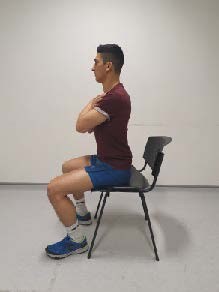
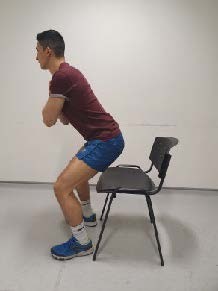
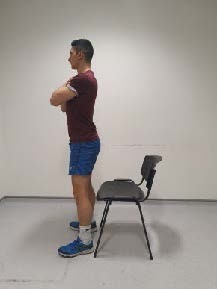
Level two: keeping your back straight. Bend your knees and move your bottom back. Then return to standing slowly.
Reach your hands out and stick your bottom back. Go down as far as you can, just above 90 degrees and return to standing. Ideally, sit back into your heels and then come back up.
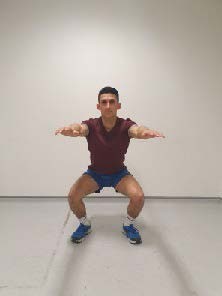
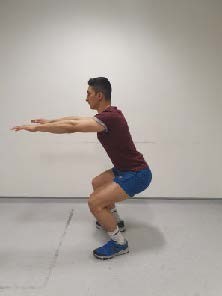
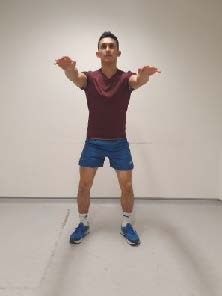
Exercise two: static lunges to dynamic lunges
Level one: start standing with your feet together, and step forwards letting your back knee drop towards the floor. Ensure that your front knee does not go beyond your toes and keep your back straight. You can hold onto a rail.
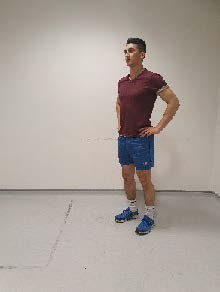
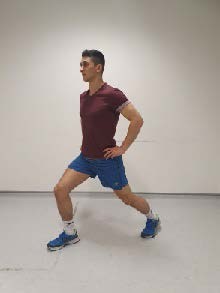

Level two: start standing with your feet together, holding a light weight in each hand. Step forwards letting your back knee drop towards the floor, then step back to neutral with your feet together. Keep alternating stepping forward with each leg.
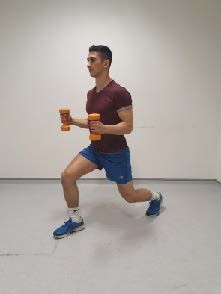
Exercise three: step ups
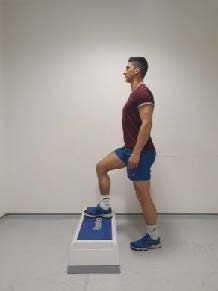
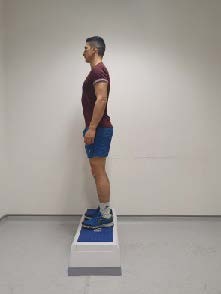
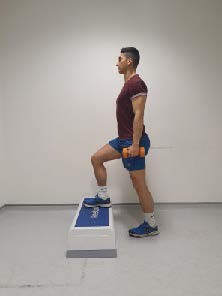
Level one: step both feet onto the step and then step both feet back down. If you need, you can lightly hold a handrail for balance. Try to alternate which foot you step up with first.
Level two: as above but holding weights in your hands to make it harder or step onto the second step.
Exercise four: hand to knee
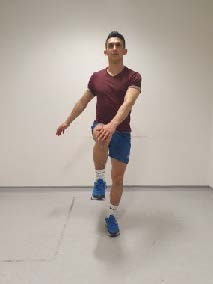
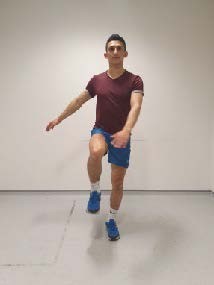
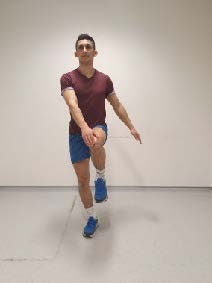
Level one: bend your knee towards your chest and touch your hand to your opposite knee, then repeat on the other side.
Level two: repeat as above but jump into each position
Exercise five: double leg calf raises to single leg
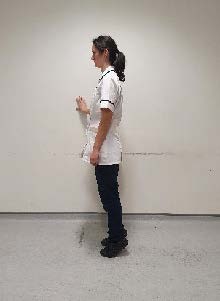
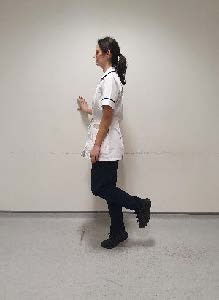
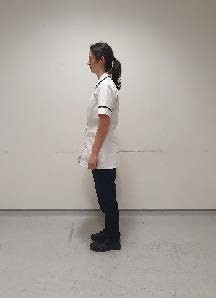
Level one: hold onto a solid surface and go up onto your tip toes in a controlled manner. Slowly lower yourself down.
Level two: hold onto a solid surface and put all your weight only onto one leg. In the same way, go up onto your tip toes on the one foot, and slowly come down. Repeat on the other leg too.
Exercise six: wall press to press ups
Level one: place your hands on a sturdy wall, keeping your hips and body straight slowly bend and then straighten your elbows.
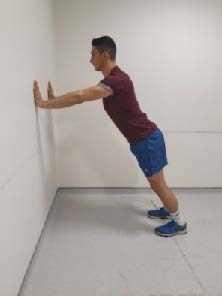
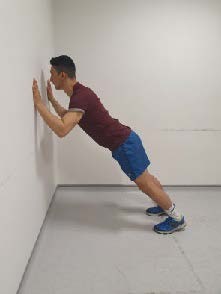
Level two (a): position yourself with your knees on the floor and your arms straight. Keeping your hips and body straight slowly bend and then straighten your elbows.
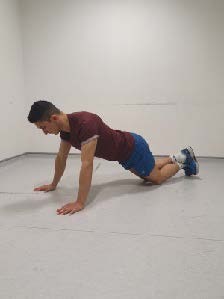
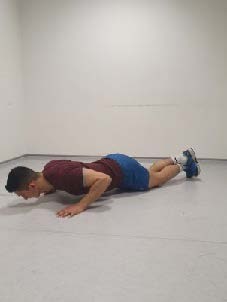
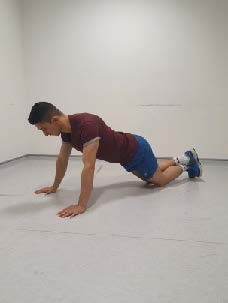
Level two (b): position yourself lying on your stomach with your hands by your chest. Push up so your elbows are straight and your hips and body are straight, then slowly lower back to the floor.
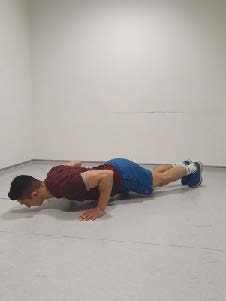
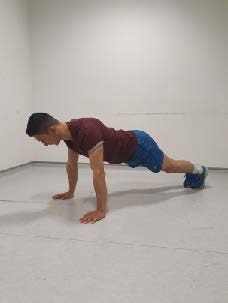
Exercise seven: bicep curls
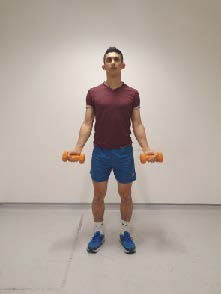
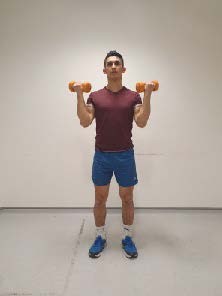
Hold two light weights in your hands and bend your elbows (bicep curl), and then relax and straighten the elbows down.
Exercise eight: overhead shoulder press
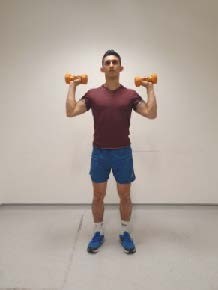
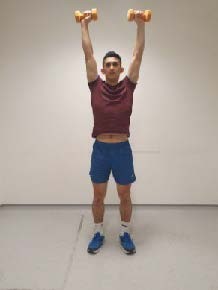
Push the weights above your head and then bring back down and return to original position.
Exercise nine: core stability
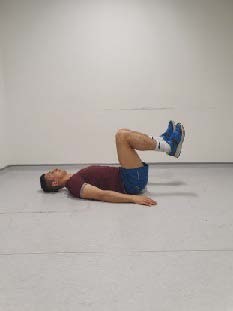
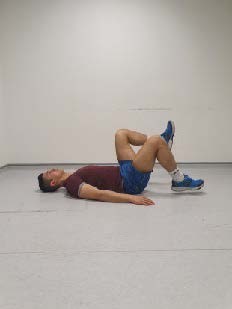
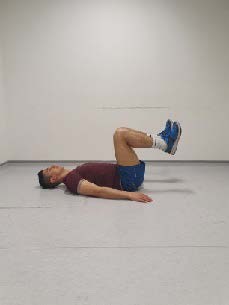
Lie on your back keeping your neck rested, in bed or on the floor. Lift your knees to create a 90-degree angle, so they are parallel to the floor.
Tap one foot at a time down, and bring back to neutral, engaging your lower back with the ground to keep yourself steady.
Exercise ten: bridging
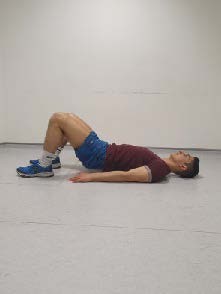
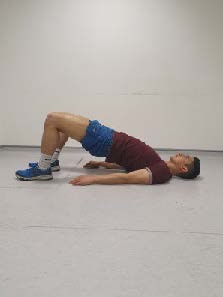
Lie on your back keeping your neck rested, in bed or on the floor. Bend your knees so your heels are grounded.
Engage your abdomen muscles and push your lower back into the ground / bed. Squeeze your buttocks and lift / clear off the ground, hold for a few seconds.
Come back down and relax.
Keep Improving
As you get stronger and find the exercises are easier it is important to increase the number of repetitions and sets so that you keep improving.
Repetitions: how many you do in a row e.g., 10 squats
Sets: how many rounds of repetitions you do e.g., 10 squats, 20 seconds rest and another 10 squats, would be classified as “two sets”
Lower level: six to 12 repetitions, one to three sets
Higher level: eight to 15 repetitions, three to five sets
By the end of your repetitions, you should feel that you would need help to complete one more and require a rest before doing another set.
At first you may find you only have energy to complete one or two exercises at a time, that’s fine you can spread them out throughout the day. As you start to get stronger you will find you can complete more of them at one time.
If you don’t have weights at home, you can hold bottles of water or cans of food.
| Date | Number of steps | Notes |
|---|---|---|
 Translate
Translate